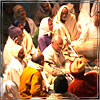Sign in to follow this
Followers
0

Puranic Expression -- History and Allegory
By
raga, in Spiritual Discussions
Rate this topic

By
raga, in Spiritual Discussions
Rate this topic